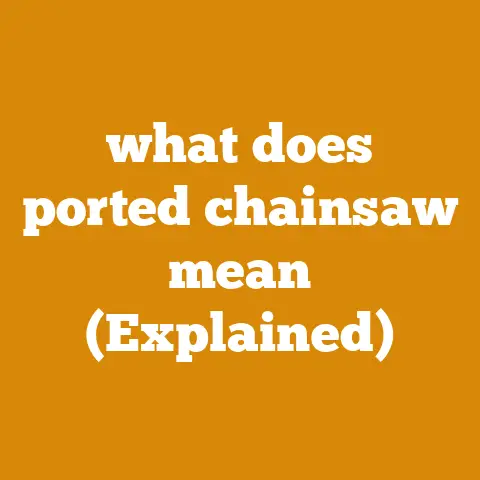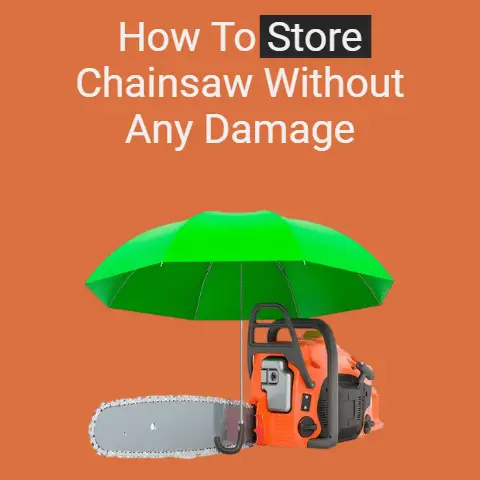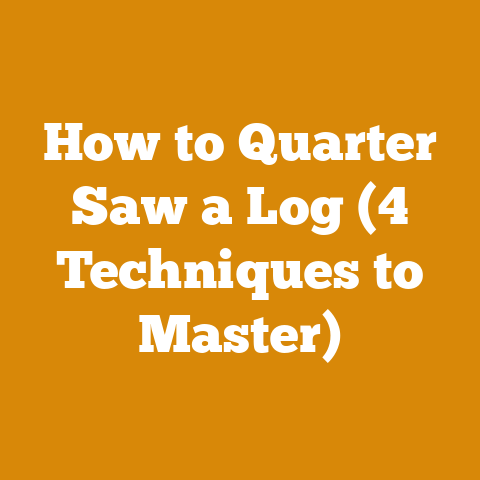How Much Does a Small Chainsaw Cost (3 Budget Picks)
How Much Does a Small Chainsaw Cost (3 Budget Picks)
Climate-Specific Needs
I remember when I first moved to a region with a damp climate; my old chainsaw didn’t fare too well. It got rusty quicker than expected, and starting it was a hassle. That’s when I learned the importance of choosing the right chainsaw for your climate.
Cold Climates
In colder areas, chainsaws can face challenges like freezing oil and battery inefficiency. Look for models with cold-weather features. I once used a chainsaw with a heated handle – it made winter wood cutting so much more bearable!
Hot Climates
On the flip side, in hotter climates, overheating can be an issue. Chainsaws with excellent ventilation and heat-resistant coatings are best. I found out the hard way when my chainsaw stalled mid-cut during a summer afternoon project.
Humid Climates
Humidity can lead to rust and electrical issues. I always ensure my chainsaw is stored properly and away from moisture. Investing in a dehumidifier for your storage area could save you lots of trouble.
Small Chainsaw Cost Overview
When I started my chainsaw journey, I was on a tight budget. I couldn’t afford to splurge on high-end models straight away. This led me to explore various budget-friendly options.
Budget Chainsaws ($50 – $150)
These are perfect for beginners or those who need a chainsaw for occasional use. They’re affordable and generally easy to use. My first one was in this range, and it served its purpose well for small yard tasks.
Mid-Range Chainsaws ($150 – $300)
If you’re planning on more frequent use or slightly bigger projects, mid-range options might be more suitable. They offer more power and durability without breaking the bank.
High-End Chainsaws ($300 and above)
These are professional-grade tools designed for heavy-duty work and frequent use. If you find yourself needing to cut down large trees often, this might be the investment to consider.
Why Go for a Budget Chainsaw?
You’re probably asking yourself if a budget chainsaw will really meet your needs. Trust me, unless you’re a professional lumberjack, these budget models can be incredibly useful.
Lightweight and Portable
Most budget chainsaws are compact and easy to handle, especially if you’re not used to working with power tools. My first chainsaw was so light that I could operate it comfortably even at awkward angles.
Perfect for Small Jobs
Need to trim some branches or cut up logs for firewood? Budget chainsaws are great for these tasks. I’ve used mine countless times to clear up after storms or prepare for bonfires with friends.
Easy Maintenance
One of the biggest perks is the simplicity of maintaining these machines. They’re usually designed with user-friendliness in mind – perfect for someone like me who isn’t mechanically inclined!
3 Budget Picks for Small Chainsaws
Let me introduce you to three of my favorite budget chainsaws. These have been tested by yours truly and come highly recommended.
1. Greenworks 20222 9-Inch Corded Chainsaw
Price Range: $50 – $70
I got this as my very first chainsaw and was pleasantly surprised by its performance. It’s perfect for beginners or anyone looking for a reliable tool without the fuss of gas or batteries.
Experience: I used it mainly for trimming branches in my backyard. It’s not the most powerful out there, but it gets the job done smoothly. Just remember you’re limited by the cord length – an extension cord is your best friend here.
Pros:
- Low cost
- Simple to operate
- Quiet compared to gas models
Cons:
- Restricted movement due to the cord
- Not ideal for larger cutting tasks
Safety Tip: Always double-check that your extension cord is suitable for outdoor use to avoid any unwanted surprises.
Price Range: $100 – $130
This saw has been a lifesaver on numerous camping trips. Being cordless means freedom – no cords to trip over or tangle!
Experience: I’ve used it extensively for cutting firewood while camping. Its lightweight nature means even my wife is comfortable using it, which is saying something!
Pros:
- Portable and easy to carry
- Quick chain tension adjustment
- Compatible with other WORX tools
Cons:
- Requires regular charging
- Slightly less powerful than some gas models
Safety Tip: Keep an eye on the battery level; it’s wise to carry an extra battery if you plan on working longer hours.
3. BLACK+DECKER LCS1020 20V Max Lithium-Ion Chainsaw
Price Range: $120 – $150
This model has been my trusty companion for more than just yard work. Its power and efficiency make it feel like you’re getting more than what you paid for.
Experience: Whether it’s pruning trees or clearing brush, this saw manages quite well. The tool-free chain tensioning feature is a big plus – no fumbling around with extra tools!
Pros:
- Excellent battery life
- User-friendly design
- Reliable cutting performance
Cons:
- Limited bar length restricts cutting capacity
- Needs regular chain maintenance
Safety Tip: Regularly check both the oil level and chain tension before starting any task.
Equipment Requirements and Prerequisite Knowledge
Before you jump right into using your new chainsaw, let’s go over what you’ll need in terms of equipment and know-how.
Required Materials:
- Safety goggles: Protect those eyes from flying debris.
- Ear protection: Chainsaws can be loud enough to damage hearing.
- Gloves: Get a good grip and protect your hands.
- Sturdy footwear: Steel-toed boots are ideal.
- Chainsaw oil: Keeps your chain running smoothly.
Prerequisite Knowledge:
- Understanding basic chainsaw operations: How it starts, cuts, and stops.
- Familiarity with safety gear: How each piece protects you.
- Maintenance basics: Cleaning, oiling, sharpening chains.
Critical Safety Precautions
Using a chainsaw can be dangerous if you’re not careful. Here’s what I always keep in mind:
- Read the Manual: It might seem tedious, but each model has its quirks.
- Inspect Your Tool: Give it a once-over before each use – loose parts or damages can be dangerous.
- Gear Up: Never skip on safety gear; it’s there for a reason.
- Mind Your Surroundings: Make sure your area is clear of obstacles or people.
- Stay Focused: Distractions can lead to accidents; keep your mind on the task at hand.
Troubleshooting Tips
Chainsaws can be finicky at times. Here are some common issues and how to tackle them:
Chainsaw Won’t Start?
- Check Fuel/Battery: Make sure it’s topped up or charged.
- Inspect Spark Plug: Clean or replace if dirty; a faulty spark plug can prevent starting.
Chain Not Cutting Properly?
- Sharpen the Chain: A dull chain makes cutting ineffective and dangerous.
- Adjust Tension: Ensure it’s neither too tight nor too loose.
Chainsaw Stalls Mid-Cut?
- Check Air Filter: A clogged filter can choke the engine.
- Refuel/Battery Check: Running out of power can cause stalling.
Best Practices
- Regular Maintenance: Clean your chainsaw after every use; it prolongs life.
- Proper Storage: Store it in a dry place to avoid rusting.
- Sharpen Regularly: Keep that chain sharp – it’s safer and more efficient.
- Use Correct Fuel Mix (for gas models): Incorrect fuel can damage your engine.
- Learn Basic Repairs: It saves time and money when minor issues arise.
Common Questions and Concerns
Q: Can I cut down a full-grown tree with these?
A: Smaller trees, yes, but anything larger requires more power.
Q: Are electric chainsaws powerful enough?
A: For small tasks like pruning or cutting firewood, definitely!
Q: How often should I maintain my chainsaw?
A: Regular cleaning after each use is recommended; sharpening depends on usage frequency.
Important Reminders and Next Steps
Using a chainsaw safely is all about preparation and awareness. Always prioritize safety over speed, taking the time to familiarize yourself with your specific model’s features and maintenance needs.
FAQ Section
Q: How often should I sharpen my chainsaw?
A: Usually after every few hours of cutting or whenever you notice it struggling with cuts.
Q: Is it okay to use a budget chainsaw for regular work?
A: Yes! Just ensure it’s within its operational capacity and keep up with maintenance.
Q: How do I know if my chainsaw needs more oil?
A: Many models have an oil level indicator; check regularly before each use.
By now, you should have a clearer picture of what to expect in terms of cost and features when selecting a small budget-friendly chainsaw. Remember, it’s all about finding what fits your specific needs without overspending!






